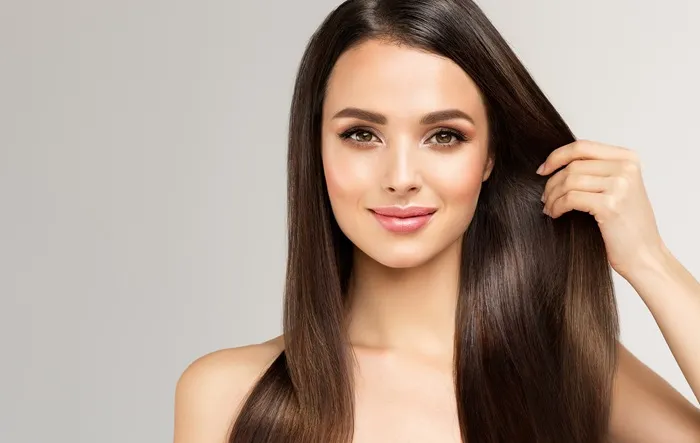Long hair has been a timeless symbol of beauty, identity, and self-expression across cultures and eras. As a hairstylist with years of experience, I’ve listened to countless clients share their reasons for loving long locks. From cultural traditions to personal confidence, the appeal of long hair is deeply rooted in human psychology, history, and social norms.
This article explores the many reasons people are drawn to long hair, breaking down the topic into simple, logical sections. Let’s dive in!
Cultural Significance: Long Hair as a Symbol of Identity
Long hair holds powerful meaning in many cultures. It often represents spirituality, strength, or social status.
Spiritual and Religious Beliefs:
In some cultures, hair is seen as a connection to the divine. For example, Sikhs believe hair is a sacred gift from God, and cutting it is forbidden. Similarly, some Native American tribes view long hair as a link to nature and ancestral wisdom. In Christianity, long hair on women has historically been tied to modesty and virtue (as mentioned in the Bible).
Status and Power:
Historically, long hair symbolized wealth and social standing. In ancient China, elaborate hairstyles with hairpieces indicated royalty. In medieval Europe, noblewomen grew their hair long to show they didn’t perform manual labor. Even today, well-maintained long hair can signal the time and resources someone invests in their appearance.
Rites of Passage:
Many cultures associate hair length with life milestones. For instance, boys in certain Indigenous communities grow their hair until adolescence, cutting it during ceremonies marking their transition to adulthood.
Historical Context: How Trends Shaped Preferences
Long hair’s popularity has fluctuated over time, reflecting societal values and movements.
Ancient Civilizations:
Egyptians, Greeks, and Vikings prized long hair. Egyptian elites wore wigs for special occasions, while Viking warriors believed long hair enhanced their ferocity in battle.
The Middle Ages to Victorian Era:
Long hair was a mark of femininity for women but frowned upon for men in Europe. Short hair for men became standard post-Renaissance, symbolizing professionalism and discipline.
The 1960s–70s Rebellion:
The hippie movement revived long hair as a symbol of freedom and resistance to conformity. Men grew their hair to challenge gender norms, linking it to social change.
Modern Resurgence:
Today, long hair is embraced across genders, thanks to shifting beauty standards and celebrity influence (think of icons like Beyoncé or Jason Momoa).
Beauty Standards: Media and Social Influence
Society often equates long hair with femininity, youth, and health.
Media Portrayals:
Fairy tales (e.g., Rapunzel), movies, and ads frequently depict long-haired characters as heroic or desirable. Disney princesses and supermodels reinforce this ideal, shaping perceptions from childhood.
Youth and Vitality:
Long hair is subconsciously linked to youth, as thinning or shorter hair can signal aging. Glossy, flowing locks are often seen as signs of good health and fertility.
Social Media Trends:
Platforms like Instagram and TikTok celebrate long hair through tutorials and hashtags (#LongHairDontCare). Influencers showcasing braids, waves, or color techniques inspire others to grow their hair.
Psychological Reasons: Confidence and Self-Expression
For many, long hair is a tool for expressing individuality and boosting self-esteem.
Creative Freedom:
Long hair offers endless styling options—ponytails, buns, braids, or beachy waves. Clients often tell me, “I can change my look daily without cutting it.”
Emotional Attachment:
Hair holds memories. One client grew her hair for a decade after overcoming illness, viewing it as a testament to her resilience. Others associate long hair with pivotal life phases (e.g., college years).
Control and Comfort:
For some, long hair acts as a “security blanket.” Tucking hair behind ears or twirling strands can be calming habits.
Practical Benefits: Versatility and Low Maintenance
Contrary to stereotypes, many find long hair surprisingly easy to manage.
Styling Flexibility:
Long hair can be worn up, down, or half-styled, adapting to weather, events, or moods. A quick ponytail works for the gym, while an elegant updo suits formal occasions.
Fewer Trims:
While long hair requires care (e.g., conditioning), it often needs fewer cuts than short styles, which demand frequent shaping.
Hiding “Bad Hair Days”:
Braids, hats, or scarves can mask unwashed or frizzy hair, offering convenience.
Social Perceptions: Gender, Power, and Rebellion
Long hair communicates subtle messages about identity and values.
Femininity vs. Masculinity:
While long hair is traditionally tied to femininity, men increasingly embrace it to reject rigid gender roles. A male client once told me, “My hair lets me feel strong and soft at the same time.”
Professional and Personal Balance:
In conservative workplaces, long hair may be seen as “unprofessional” for women, but attitudes are shifting. Many now view it as a neutral trait reflecting personal choice.
Rebellion and Nonconformity:
Punk, metal, or bohemian subcultures use long hair to reject mainstream norms. For others, gray streaks or natural textures in long hair challenge ageist or Eurocentric beauty ideals.
Conclusion
Ultimately, the love for long hair is deeply personal. Whether rooted in culture, history, or self-expression, it remains a powerful way to showcase individuality. As a stylist, I’ve learned that hair isn’t just about aesthetics—it’s a canvas for storytelling. While trends come and go, the emotional and symbolic weight of long hair ensures its enduring appeal.
Related topics:
Dermatologist Warns Tight Hairstyles Could Lead to Permanent Hair Loss
Hair Loss After Weight Loss: Understanding the Connection
What to Drink to Make Your Hair Grow Faster?


